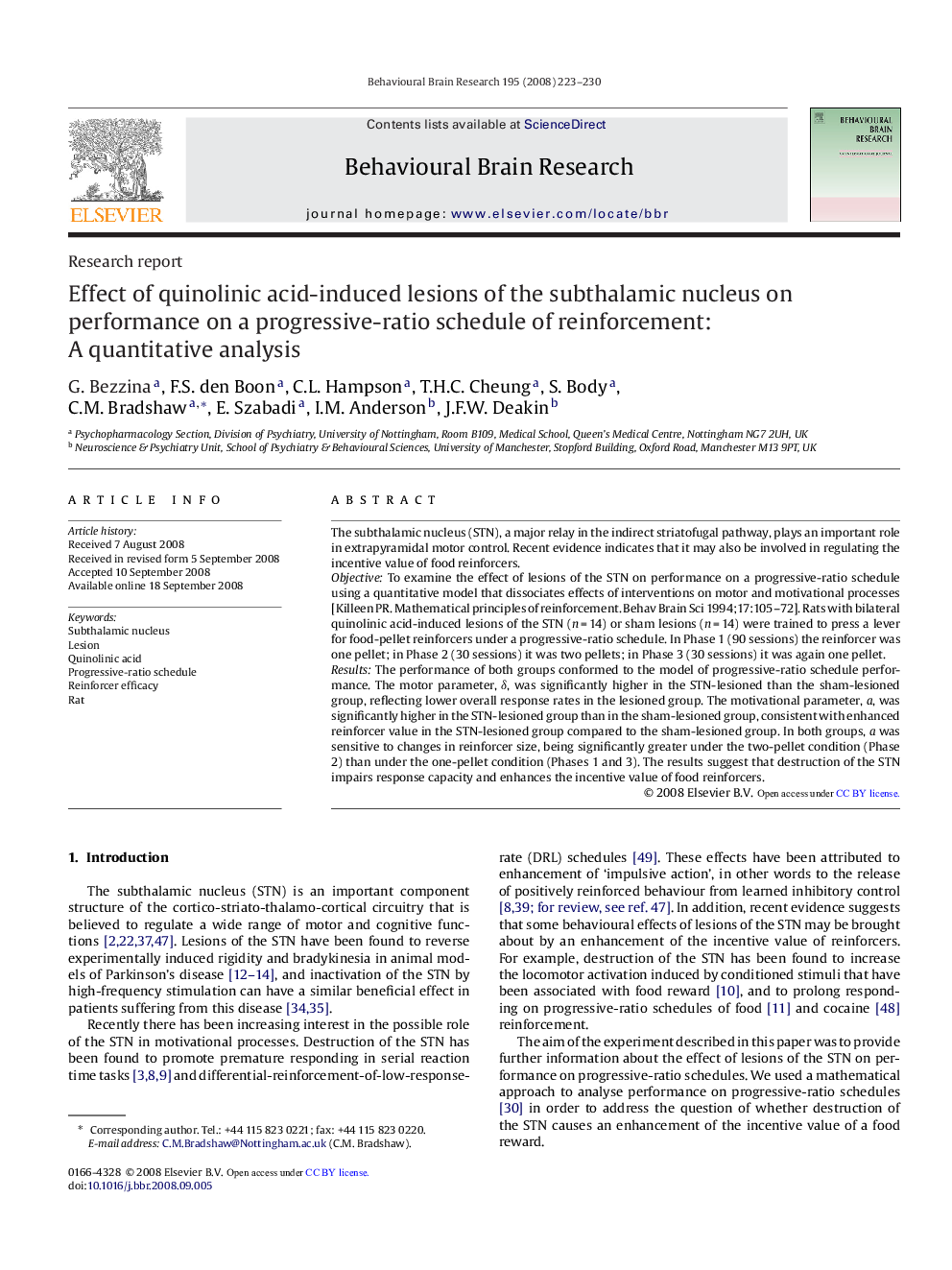| Article ID | Journal | Published Year | Pages | File Type |
|---|---|---|---|---|
| 6260243 | Behavioural Brain Research | 2008 | 8 Pages |
The subthalamic nucleus (STN), a major relay in the indirect striatofugal pathway, plays an important role in extrapyramidal motor control. Recent evidence indicates that it may also be involved in regulating the incentive value of food reinforcers.ObjectiveTo examine the effect of lesions of the STN on performance on a progressive-ratio schedule using a quantitative model that dissociates effects of interventions on motor and motivational processes [Killeen PR. Mathematical principles of reinforcement. Behav Brain Sci 1994;17:105-72]. Rats with bilateral quinolinic acid-induced lesions of the STN (n = 14) or sham lesions (n = 14) were trained to press a lever for food-pellet reinforcers under a progressive-ratio schedule. In Phase 1 (90 sessions) the reinforcer was one pellet; in Phase 2 (30 sessions) it was two pellets; in Phase 3 (30 sessions) it was again one pellet.ResultsThe performance of both groups conformed to the model of progressive-ratio schedule performance. The motor parameter, δ, was significantly higher in the STN-lesioned than the sham-lesioned group, reflecting lower overall response rates in the lesioned group. The motivational parameter, a, was significantly higher in the STN-lesioned group than in the sham-lesioned group, consistent with enhanced reinforcer value in the STN-lesioned group compared to the sham-lesioned group. In both groups, a was sensitive to changes in reinforcer size, being significantly greater under the two-pellet condition (Phase 2) than under the one-pellet condition (Phases 1 and 3). The results suggest that destruction of the STN impairs response capacity and enhances the incentive value of food reinforcers.
